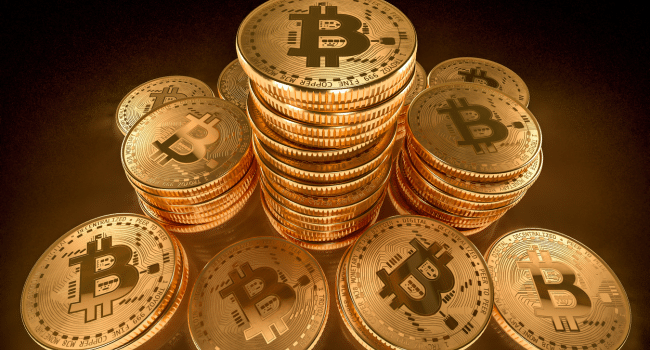Table of Contents
The world of decentralized finance (DeFi) is constantly evolving, and one of the most significant developments in recent times is the emergence of Layer 2 solutions. Layer 2 solutions aim to address the scalability and cost issues associated with Ethereum, the leading blockchain platform for DeFi. This firm offers insights and knowledge crucial for navigating the complexities of DeFi. In this article, we will explore how to master Layer 2 DeFi using Bitcoin and QuickSwap on the Polygon network. Visit innovault.io if you wish to learn about investing with education companies.
Understanding Layer 2 Solutions
What are Layer 2 Solutions?
Layer 2 solutions are secondary frameworks or protocols built on top of the primary blockchain (Layer 1) to enhance its capabilities. They enable faster and more cost-effective transactions by reducing the load on the Layer 1 blockchain. Layer 2 solutions include sidechains, rollups, and state channels.
Advantages of Layer 2 DeFi
Layer 2 DeFi offers several advantages, such as significantly reduced gas fees, faster transaction confirmation times, and increased scalability. These benefits make DeFi more accessible to a wider range of users.
Challenges and Limitations
While Layer 2 solutions have numerous advantages, they are not without challenges. These include interoperability issues between different Layer 2 networks and potential security concerns. It’s essential to carefully evaluate the specific Layer 2 solution you plan to use.
Bitcoin on Polygon
Bridging Bitcoin to Polygon
Bringing Bitcoin onto Layer 2 networks like Polygon involves using a process called wrapping. In this case, Wrapped Bitcoin (wBTC) is a popular representation of Bitcoin on Polygon. Wrapping allows Bitcoin holders to interact with DeFi applications on Layer 2.
Benefits of Using Bitcoin on Polygon
Using Bitcoin on Polygon offers numerous benefits, including access to the vibrant DeFi ecosystem and the ability to participate in yield farming and liquidity provision with a traditionally stable asset like Bitcoin.
Security Considerations
While Layer 2 networks are generally considered secure, it’s essential to be cautious when using wrapped assets. Ensure you use reputable services and adhere to best practices for securing your assets.
QuickSwap: A Primer
Introduction to QuickSwap
QuickSwap is a decentralized exchange (DEX) built on the Polygon network. It offers fast and low-cost trading of various tokens, making it an attractive choice for DeFi enthusiasts.
Liquidity Provision and Earning Rewards
QuickSwap allows users to provide liquidity to various token pools and earn rewards in return. Liquidity providers help maintain the DEX’s functionality and are compensated for their contributions.
How QuickSwap Differs from Other DEXs
QuickSwap’s key differentiator is its integration with the Polygon network, which offers faster transactions and lower fees compared to Ethereum-based DEXs like Uniswap or SushiSwap.
Yield Farming Opportunities
Yield farming involves staking tokens to earn rewards. QuickSwap offers numerous yield farming opportunities that can be lucrative for users willing to provide liquidity and engage in DeFi strategies.
Combining Bitcoin and QuickSwap on Polygon
Leveraging Bitcoin’s Stability in DeFi
One of the primary advantages of using Bitcoin in DeFi on Polygon is its stability. While other DeFi assets can be volatile, Bitcoin offers a level of reliability that can be valuable for various DeFi strategies.
Providing Liquidity with Bitcoin
Users can provide liquidity to Bitcoin-based pools on QuickSwap, allowing them to earn fees and rewards. This can be an excellent way to put your Bitcoin to work while participating in the DeFi ecosystem.
Yield Farming Strategies
Yield farming on QuickSwap with Bitcoin can be lucrative. Users can participate in liquidity provision, yield farming, and other DeFi strategies to maximize their returns.
Risk Management Techniques
DeFi involves risks, and it’s crucial to manage them effectively. Diversify your investments, use risk mitigation tools, and stay informed about the latest developments in the DeFi space to protect your assets.
DeFi Strategies and Use Cases
Earning Passive Income with Bitcoin
One of the most popular DeFi strategies is earning passive income. With Bitcoin on Polygon, users can lend their assets, stake in liquidity pools, or participate in yield farming to generate a consistent return.
Cross-Chain DeFi Opportunities
Layer 2 networks like Polygon facilitate cross-chain DeFi interactions. Users can seamlessly move assets between Layer 2 and other blockchains, unlocking a wide range of DeFi opportunities.
Navigating the DeFi Landscape on Polygon
Explore various DeFi protocols and applications available on Polygon, such as Aave, Curve, and SushiSwap. Each offers unique features and opportunities for users.
Case Studies of Successful Layer 2 DeFi Projects
Highlight successful DeFi projects that have thrived on Layer 2 networks, showcasing real-world examples of how users have benefited from these solutions.
Conclusion
In conclusion, mastering Layer 2 DeFi with Bitcoin and QuickSwap on the Polygon network opens up a world of opportunities for users seeking faster and more cost-effective DeFi experiences. The integration of Bitcoin into the Layer 2 ecosystem offers stability, while QuickSwap provides a vibrant platform for trading and yield farming. By understanding these technologies and employing effective strategies, users can take full advantage of the evolving DeFi landscape, earning rewards and participating in the future of finance.
Read more on KulFiy
